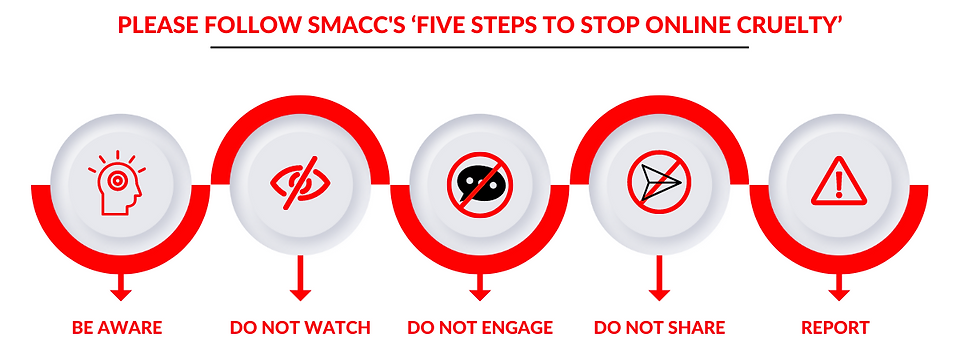
PUBLIC ADVICE
SMACC Public Advice
Please explore this page to learn more about what you can do to help fight animal cruelty on social media platforms.
Regardless of what type of cruelty you find on social media, the best actions to take are always the same. Follow these five steps and you can play a role in ending online animal cruelty content.
If you would like to tell us about cruelty content that you have seen, please head to our public reporting page.
.png)
1. Be aware
By visiting this page you are making a good start! The more you know about animals, the more easily you can spot problematic content on social media.
Sometimes animal cruelty is less than obvious, such as an elephants being bathed with a trainer, slow loris being 'tickled' by a human or monkeys dressed in clothes. These examples involve serious animal suffering behind the scenes.
SMACC has created a series of videos named “Ask Yourself!” which gives helpful tips on how to spot different forms of animal content (no graphic images used).
You can also learn more information on the issue and types of cruelty here.
.png)
2. Do not watch
It is really, really important not to intentionally watch animal cruelty videos. The more views content receives, the wider its reach on social media becomes, spreading the cruelty content to more people. Look out for clues in the video title, the post itself and any comments from other viewers before pressing play.
Check out our FAQs to learn more about why watching the content adds to the problem.
.png)
3. Do not engage
Whatever you do, no matter how outraged you feel at seeing animal cruelty, do not engage with the content. Any form of engagement, positive or negative, feeds the algorithms on social media platforms and leads to the content being boosted to even more people.
.png)
4. Do not share
Just as above, sharing animal cruelty content, even to raise awareness or express outrage, increases its reach. Please do not share such content!
Read more about how engaging and sharing such content may make it popular and profitable in our “Reporting Matters” guide.
.png)
5. Report it!
Reporting online animal cruelty content is still the best tool available to tackle animal cruelty content. Each platform has its own reporting function, and SMACC have created some short video guides, showing you step-by-step how to report on some of the biggest platforms.
Reporting may seem like a small act and you may not see the video removed immediately, but from our conversations with the platforms, we know it is incredibly important. What’s more, your report will be a crucial one amongst many which will eventually lead to the content being removed - so do not give up!
.png)
